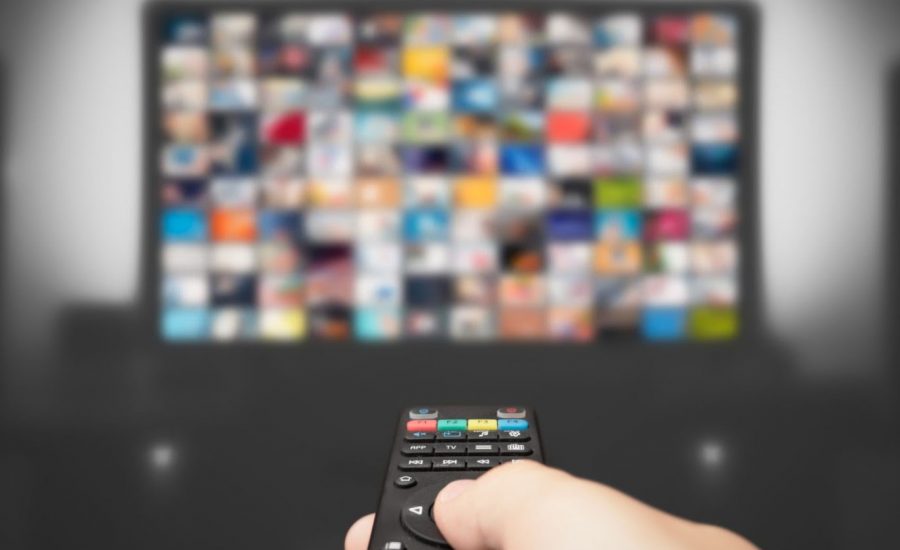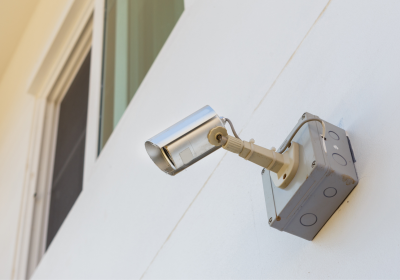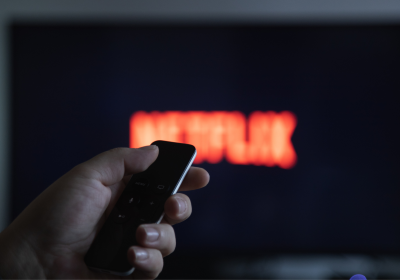Savvy hospitality business operators know that it is in their best interest to invest in hospitality TVs for their hotel, restaurant, or venue.
Despite the outward similarity in their appearance, a hospitality TV and a home TV are different, and the dissimilarities can be quite significant in terms of:
- Features
- Engineering
- Longevity
- Warranty
Essentially, a hospitality TV is more robust in its attributes, performance, and durability.
At first glance, a hospitality TV may appear to be very similar to a home TV. Still, there are significant differences in the design and engineering of these sophisticated electronic devices. It may be tempting to simply buy residential-grade TVs (especially at a discounted price) and use them in your hospitality business, but the best advice is to resist that urge.
The friendly experts at Groove Technology Solutions are standing by to guide you through the process of elevating your hospitality TV offerings. Ultimately, your business and bottom line will both benefit from deploying the right hospitality TV equipment, and here’s why:
Hospitality TVs Enhance the Guest Experience
Recent studies show that technology-savvy guests have come to expect the availability of TVs at hospitality businesses, particularly hotels. The numbers tell a compelling story of the important role that hospitality TVs play in enhancing the overall guest experience:
- 75% of hotel guests use in-room entertainment
- In-room entertainment is “very or extremely important” to 28% of hotel guests
- For many hotel guests, in-room technology is more important than popular on-site amenities like a business center, gym, spa, and even room service
- Concerning in-room technology, guests prefer to use the in-room hospitality TV over their own personal devices by more than a 2 to 1 ratio
There was a time not too long ago when a hospitality TV served only one purpose: to provide on-screen entertainment via cable or satellite programming. TVs found in hotel rooms, restaurants, and other hospitality sites paled in comparison to the higher-quality televisions that most people had at home.
But now, TVs found in hospitality locations are not only keeping pace with modern technology but they are also being transformed into hubs for a wide variety of activities that go beyond traditional on-screen entertainment. As technology continues to push the boundaries of entertainment and information platforms, these are just some of the ways that businesses are keeping up:
- Hospitality TVs can now be integrated with voice-activation technologies including Amazon’s Alexa and Google’s Assistant to control room lights, open and close drapes, and even lock the door
- On-screen entertainment now includes popular streaming services like Netflix and Hulu (hotel guests are averaging nearly five hours of streaming content per stay)
- On-demand entertainment is becoming increasingly popular in hotel rooms
- Hotel guests can now access OTT (over-the-top) content through their own devices by pairing them with a hospitality TV
- In conjunction with the hundreds of OTT apps that are now available, casting from a phone or tablet to the much larger screen in their room is quickly becoming the in-room, on-screen entertainment platform of choice (hotel guests are averaging five casting sessions per stay)
Hospitality TVs can Greatly Improve Operations
For operators, a hospitality TV represents far more than an amenity that is offered to guests to keep them happy and earn their repeat business. It is a powerful tool for promoting on-property events and services, executing targeted branding, and engaging with guests. Here are just a few of the ways that a hospitality TV can enhance the guest experience while benefiting the operator:
- Real-time information such as on-property event schedules can be broadcast and displayed to hospitality TVs
- On-site services such as dining reservations and show bookings can be promoted in real-time (for example, during non-peak or low-traffic periods, special discount codes can be offered through in-room hospitality TVs to increase traffic)
- Remote checkout through a hospitality TV allows a guest to avoid potentially long waits in the lobby, thus streamlining the end-of-stay process and enhancing their overall stay
- In-room dining (e.g., room service) menus and options can be viewed and orders placed through a hospitality TV
- Reservations and ticket purchases can be done from the comfort of a guest’s room through a hospitality TV for things like golf tee times, massages, and spa services with real-time availability
In sum, hospitality TVs provide a level of connectivity between the business and the guest that enhances the visitor experience and improves the operator’s bottom line.
Hospitality TVs are Designed for Longer Use
A home TV is typically in use for no more than four to six hours per day and supports popular forms of entertainment that include watching different types of programming (e.g., cable, satellite, or streaming services) and playing video games. As such, a TV intended for residential use is designed and built for this purpose and environment.
On the other hand, the duty cycle (e.g., the typical duration of being powered on and in use) for a hospitality TV is significantly longer, ranging anywhere from 12 hours per day to continuous 24-hour use in some cases. In order to withstand the rigors of such demanding daily operation requirements, TVs intended for service in hospitality locations have the following design features:
- Large heat sinks incorporated into a hospitality TV’s infrastructure allow heat to quickly dissipate and permit continuous operation
- Many hospitality TV models feature onboard cooling fans which protect circuitry and display components
- Impact-resistant metal housings protect sensitive internal components and allow installation of hospitality TVs just about anywhere in a hospitality business
While installing a home TV in your hotel, medical facility, student housing, or other hospitality location may be a cost-saving measure in the short run, with its cheaper construction and lack of thermal-reduction measures, it simply will not last very long in your hospitality setting. Ultimately, investing in proper TV equipment is the wise move for any hospitality operation, small or large.
Hospitality TVs are Significantly Brighter
Another major difference between a hospitality TV and a home TV is the brightness of the display. This value is measured in units that are known as “Nits” (one Nits is roughly equivalent in brightness to a single lit candle).
Interior lighting in a typical residence is controlled and somewhat subdued, and thus home TVs commonly have Nits values ranging from 150 to 250. In contrast, hospitality TVs, particularly those in common areas like lobbies, dining venues, and other gathering places, have displays with brightness levels of around 300 Nits.
Hospitality TVs that are installed in outdoor spaces can have screen brightness levels of up to 6000 Nits for proper resolution and ideal viewing.
Hospitality TVs are Covered by Longer Warranties
A significant consideration for hospitality operators is the length of warranty coverage offered by the manufacturer of their TV equipment. After all, a hospitality TV is an asset and the period of time that the manufacturer is willing to cover the cost of repair or replacement is an important consideration.
Hospitality TVs cost more than home TVs, but their warranty coverage period is often three to five times longer than their residential counterparts. The typical warranty for a hospitality TV is three years covering parts and labor. For some models, this period can be as long as five years.
Warranties for home TVs are much shorter, and many manufacturers specifically limit coverage if their units are used in a commercial setting (some for as short as 90 days). It is not uncommon for home TV manufacturers to explicitly state that installing a residential-purposed TV in a commercial environment of any kind nullifies and invalidates any warranty coverage.
Aside from the length of warranty protection, the manner of obtaining service also differs greatly. Home TVs almost always require the owner to “carry-in” the defective unit to receive service, even under warranty. Hospitality TVs, however, typically include “on-site” service as part of their warranty coverage which saves operators the hassle and cost of taking malfunctioning units to an offsite repair center.
Hospitality TVs Incorporate Anti-Piracy Features
Because of the nature of settings where hospitality TVs are in use, particularly in hotel rooms, certain measures must be taken to prevent content piracy (the unauthorized copying and distribution of protected material). These measures typically consist of technologies known as DRM (Digital Rights Management) systems that are designed to thwart and prevent illegal activity.
Unlike home TVs, most hospitality TVs feature some form of DRM technology. One prominent feature found on many hospitality TVs is a sophisticated encryption technology known in the industry as Pro:Idiom. Originally developed by Zenith Electronics, Pro:Idiom is now fully integrated into many hospitality TVs eliminating the need for external encryption devices.
Anti-piracy measures are an important consideration for hospitality operators because as part of their agreement to offer specific programming in their rooms, restaurants, bars, or other venues, content providers require that DRM measures are in place to prevent illegal piracy. Here’s a basic look at how a Pro:Idiom-equipped hospitality TV protects digital rights:
- Content (e.g., specific live programming or video-on-demand) is received by a hospitality business through a feed
- This feed is digitally encrypted when it is sent to individual rooms or hospitality TV sets
- Each hospitality TV set is equipped with technology to decrypt and display the content (in the case of Pro:Idiom TVs, this technology is built-in)
Hospitality TVs Can Be Cloned
Certain hospitality businesses, such as large resorts or hotels, can have hundreds upon hundreds of hospitality TVs on-site. Programming these devices to have the same welcome screen, channel lineups, and other features can be a monumental and time-consuming task requiring an army of technicians to manually enter these customized parameters into each unit using each TV’s remote control.
Fortunately, hospitality TV manufacturers have developed a way to program large quantities of units in an efficient and time-saving manner. Known as “USB cloning,” the programming data from one hospitality TV can be stored onto a memory storage device and then copied to as many additional TV units as needed.
Hospitality TV Settings Can Be Locked Out
Unlike their home counterparts, hospitality TVs can be exposed to a high number of different users. Therefore, it is in an operator’s best interests to block access to certain programming features in a hospitality TV, such as display settings and other setup parameters. This can be done by locking out certain menu display options as well as disabling manual inputs (e.g., programming buttons) on the TV itself.
Another important feature found on hospitality TVs, especially for multi-room operations like hotels, hospitals, and student housing, is a volume limiter which prevents a guest or user from increasing the volume level to the point of becoming a nuisance to adjacent rooms.
Hospitality TVs Do Not Suffer from Screen Burn
Depending on the particular application, hospitality TVs are not necessarily limited to displaying live programming for entertainment purposes. Many units in a hospitality setting function as digital signage platforms. In such instances, it is common for the same or limited sequence of images to be displayed for extended periods of time (for instance, wayfinding displays or the menu board at a restaurant).
On a home TV, the continuous display of a static image can result in the appearance of that image’s ghost or silhouette being permanently etched into the screen. Known as “burn-in” or “screen burn,” image retention does not occur in hospitality TVs, thanks to specialized components that are designed to prevent this unsightly condition from occurring.
Hospitality TVs Turn Rooms into Smart Rooms
Just as a hospitality TV can serve as a central entertainment hub for guests, it can also transform a hospitality space such as a hotel room or conference hall into a smart room. Not only can a hospitality TV enhance the guest experience, but it can also streamline a hospitality business’ operations by performing certain tasks and services on-demand.
Here are a few examples of service-enhancing features that can be integrated into a hospitality TV but would not be possible on a home TV:
- Guests can input their own individual preferences into an information screen on the hospitality TV in their room, including a digital “Do Not Disturb” setting that can be activated by the touch of a single button on the TV remote and dispatched to all hotel staff
- Hotel management can remotely monitor information, including real-time room occupancy and cleaning status
- Guests can enter requests relating to their stay through their in-room TV, including housekeeping matters
- Hospitality TVs can even be fitted with environmental sensors that can detect room temperature and adjust heating and cooling according to presets entered by the guest into the TV’s climate control menu (specially equipped TVs can even detect when the room is occupied)
When it comes to features that enhance the guest experience while streamlining operations, hospitality TVs are transforming ordinary rooms into smart rooms.
Specialized Features for Hospitality TVs in Hotels
The most prominent use of hospitality TVs is in the lodging industry; in other words, hotels and resorts. Because of the unique setting of a hotel room, TVs installed in this environment have features that are not likely to be found on TVs in other hospitality settings. These include:
Anti-Theft Measures
A hospitality TV outfitted with the latest technology is not only a top-drawer amenity that is sure to please any hotel guest, but it can also be an enticing target for those with designs on taking the TV with them to use at home or perhaps to sell off for a quick buck.
To dissuade the possibility of in-room theft of hospitality TVs, virtually all manufacturers include robust anti-theft measures with their units, including lock-down hardware that is integrated into the TV’s mounting structure whether the unit is installed on a piece of furniture or on the wall.
(Hospitality TV remote controls even have screw-down battery covers to prevent the theft of batteries by guests.)
Compatibility with Add-On Devices
Because hospitality TVs support such a broad range of services and features, particularly in a lodging setting, they must be able to interface with external devices. The classic example is the SBB (set back box) which is a small module that typically mounts to the rear panel of a hospitality TV to enable guest checkout functionality through the TV set.
A hospitality TV in a hotel room typically has a passthrough infrared port that allows the guest’s inputs entered through the TV remote control to reach the SBB via the remote’s signal.
Final Thoughts
Technological advancements have put tremendous power at people’s fingertips, starting with their personal and home devices. Hospitality TVs have taken smart technology a step further, allowing guests to enjoy all their familiar forms of digital entertainment and then some. Hospitality TVs are also enhancing the services and amenities offered by businesses ranging from hotels to restaurants to sporting venues.
You need expert guidance to navigate the myriad of options and develop a customized, personally curated plan to deploy an effective digital strategy in your hospitality business. Our customer-centric team is standing by in all 50 states, ready to engage, implement, and execute.
SOURCES
https://hoteltechreport.com/news/hospitality-tv
https://www.hotelmanagement.net/tech/four-trends-television-technology-year
https://www.dataprojections.com/dp-blog/commercial-vs-residential-displays-knowing-the-difference/
https://versatech.com.ph/commercial-vs-consumer-tvs/
https://www.tvspecialists.com/the-difference-between-consumer-commercial-tv-displays/#.YHHC3uhKiUl
https://business.sparklight.com/large-business/blog/how-does-hotel-tv-system-work
https://blog.solidsignal.com/tutorials/why-are-hotel-tvs-different-from-other-tvs/
https://twstransworld.com/consumer-vs-hospitality-tvs/
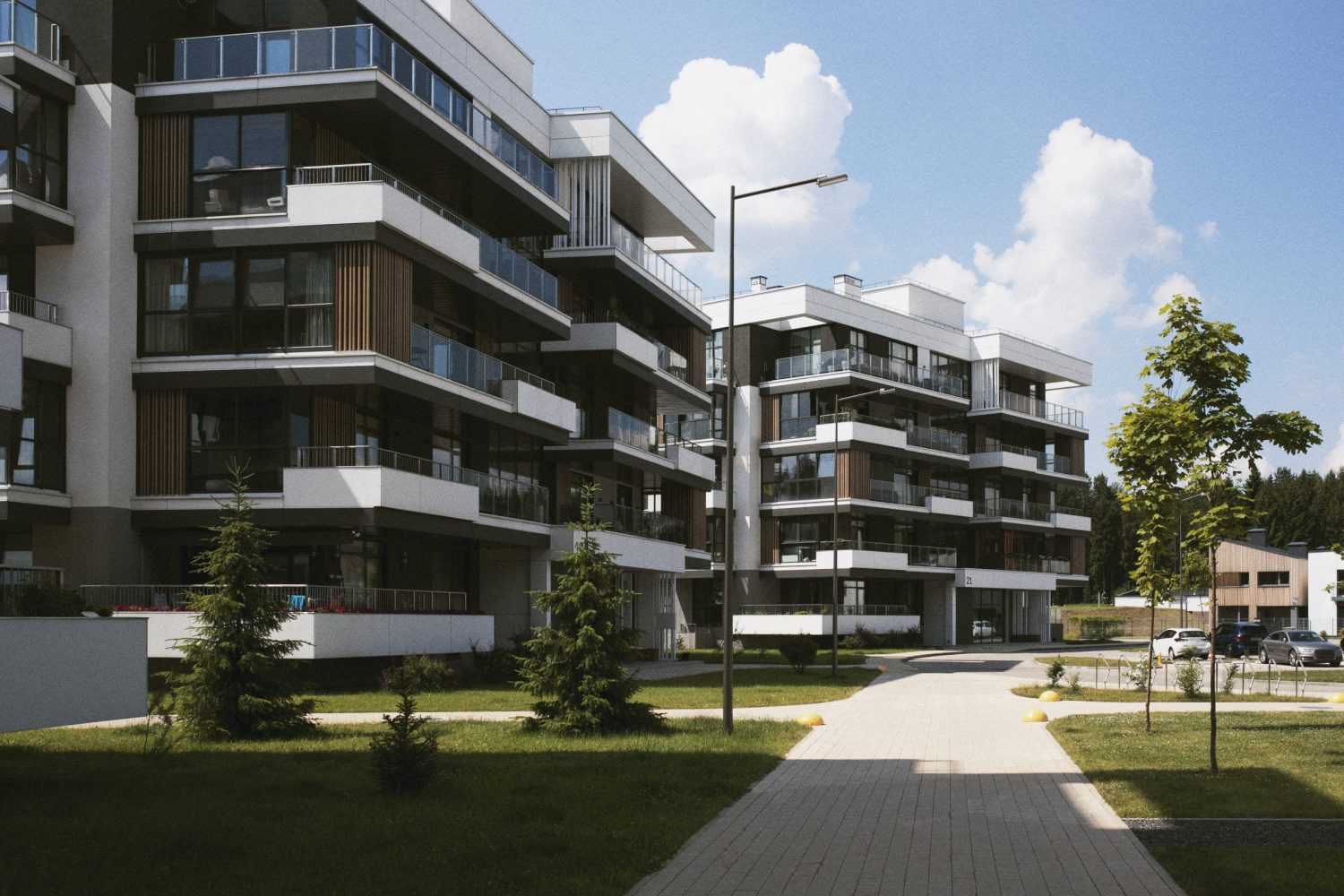
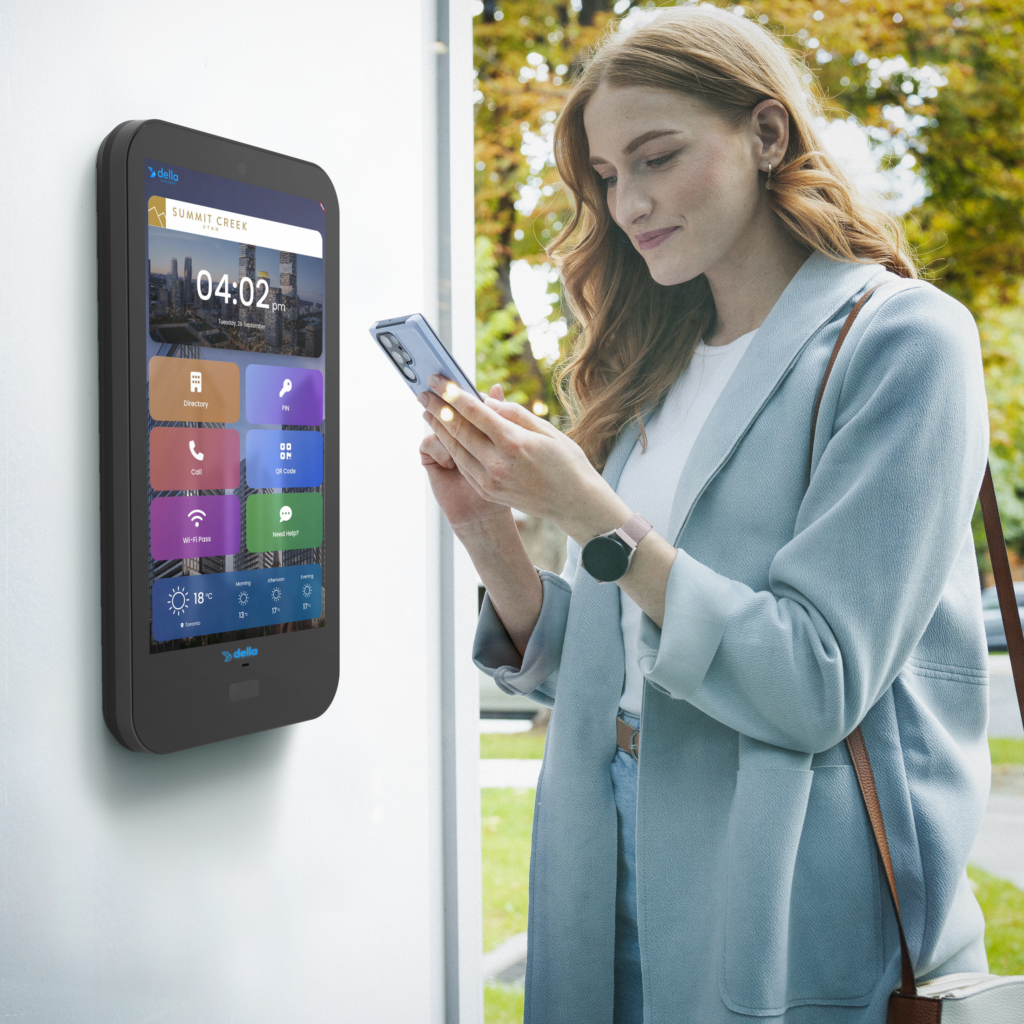
Explore Our Industries and Services in Detail
Discover how our all-in-one technology solutions and systems integrations can improve your guest and resident experience.
